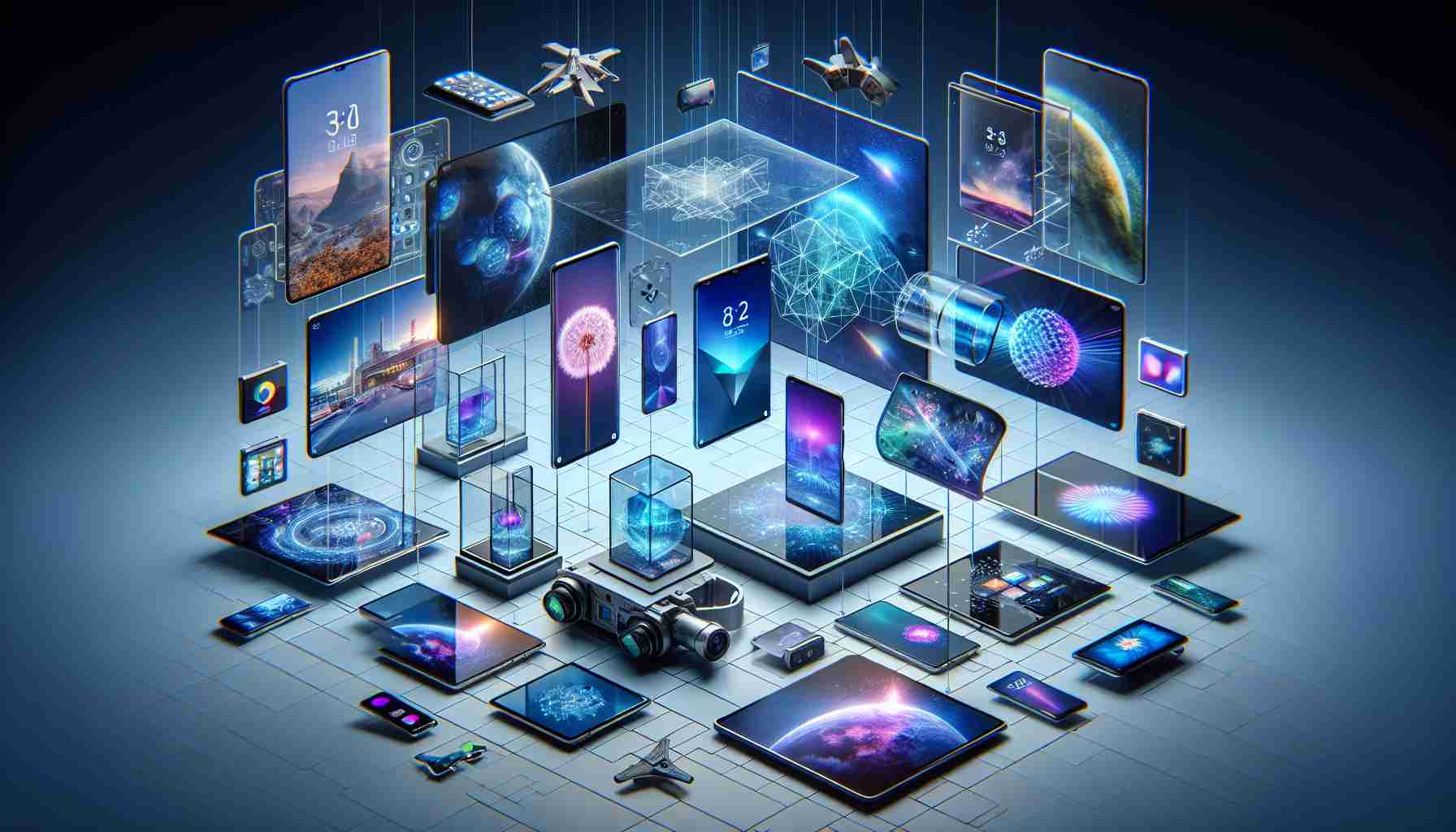Samsung Display Unveils Groundbreaking QD-LED Panels
During the SID 2024 event, Samsung Display, the global leader in OLED technology, revealed an array of cutting-edge display technologies that are set to revolutionize the industry. Among the notable innovations is the introduction of the world’s premiere QD-LED panels. This new display type is particularly notable for its resilience against burn-in—a common problem associated with OLED screens.
Samsung Display’s advanced QD-LED panel uses semiconductor materials to create pixels that produce RGB colors and backlight, while entirely omitting the organic elements that often deteriorate over time in traditional OLED panels. These semiconductor-based pixels are touted to faithfully reproduce a vibrant color spectrum and simplify manufacturing processes through inkjet printing methods.
The corporation demonstrated the capabilities of QD-LED through an 18.2-inch panel, boasting a resolution of 3,200 x 1,800 pixels, a pixel density of 202ppi, and a brightness of 250 nits. An eco-friendly aspect of Samsung’s QD-LED panels is their utilization of cadmium-free quantum dots, highlighting the company’s commitment to environmental sustainability.
Next-Generation QD-OLED and Ultra-Thin OLED Panels
Samsung Display didn’t stop there; the company also presented the latest in QD-OLED technology with cutting-edge gaming monitors and TV panels. Exhibiting screens like a 31.5-inch 4K 240Hz monitor and a 27-inch 360Hz gaming panel highlight Samsung’s leadership in high-performance display technology. For home entertainment, a 65-inch 4K QD-OLED TV panel was showcased, with an impressive peak brightness of 3,000 nits.
In the realm of portable displays, Samsung displayed Ultra-Thin OLED panels that are significantly lighter and thinner than their rigid counterparts. These revolutionary panels employ a full oxide backplane, which permits refresh rates as low as 1Hz, leading to over 40% reductions in power usage, which in turn contributes to lengthier battery life for laptops.
A spokesperson for Samsung Display expressed excitement about displaying their dominant flexible display edge and pioneering technologies at SID 2024. This platform, bringing together the brightest minds in display technology, serves as a testament to the company’s ceaseless innovation and the vast potential for growth in the display sector.
The Importance of Innovative Display Technologies from Samsung Display
Samsung Display’s innovative display technologies signify substantial progressions in the display industry. Presenting groundbreaking display panels such as QD-LED and QD-OLED represents an evolution from past offerings and opens up new possibilities for consumer electronics in terms of image quality and device design.
Key Questions and Answers:
– What makes QD-LED different from traditional OLED?
QD-LED technology does not rely on organic compounds for pixel creation, which significantly reduces the risk of burn-in that appears over time in OLED displays. This can potentially extend the lifespan of displays.
– What are the environmental benefits of Samsung’s new panels?
Samsung’s QD-LED panels use cadmium-free quantum dots, which are less harmful to the environment compared to other quantum dots that contain heavy metals.
– How do Ultra-Thin OLED panels impact battery life?
These panels can operate with refresh rates as low as 1Hz, reducing power consumption by over 40%. This can significantly extend the battery life of laptops and other portable devices.
Key Challenges and Controversies:
The main challenges that Samsung Display may face include manufacturing costs, market competition, and consumer adoption. The cost of producing newer technologies like QD-OLED and ultra-thin OLED could be higher, affecting pricing and market accessibility. Additionally, competing companies may release similar or alternative technologies that could either drive innovation or muddy consumer choice.
Concerns around the actual environmental impact of cadmium-free quantum dots and the overall sustainability of the production processes might also arise as part of a broader conversation about electronics and e-waste.
Advantages and Disadvantages:
The advantages of Samsung Display’s new technologies include potentially longer-lasting displays due to reduced burn-in risks, better color reproduction, increased energy efficiency leading to longer battery life, and a reduced environmental impact through the use of cadmium-free materials.
On the downside, these technologies might come at a premium cost, at least initially, as research and development expenses are recouped. There’s also the risk of early adopter issues, where the first generation of new technologies might come with unforeseen bugs or limitations.
For those interested in exploring more about Samsung Display and its technologies, you may visit their official website: Samsung Display.
Bear in mind that as display technology continues to advance, the information provided herein may quickly become outdated, and new developments could substantially alter the advantages and potential drawbacks of these technologies.
The source of the article is from the blog coletivometranca.com.br
